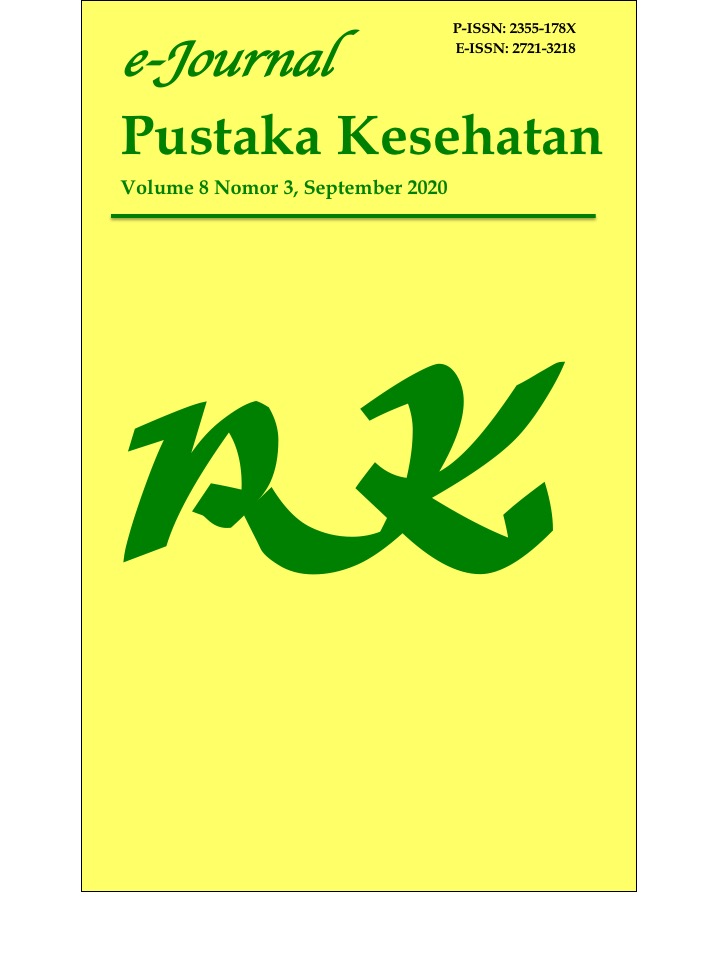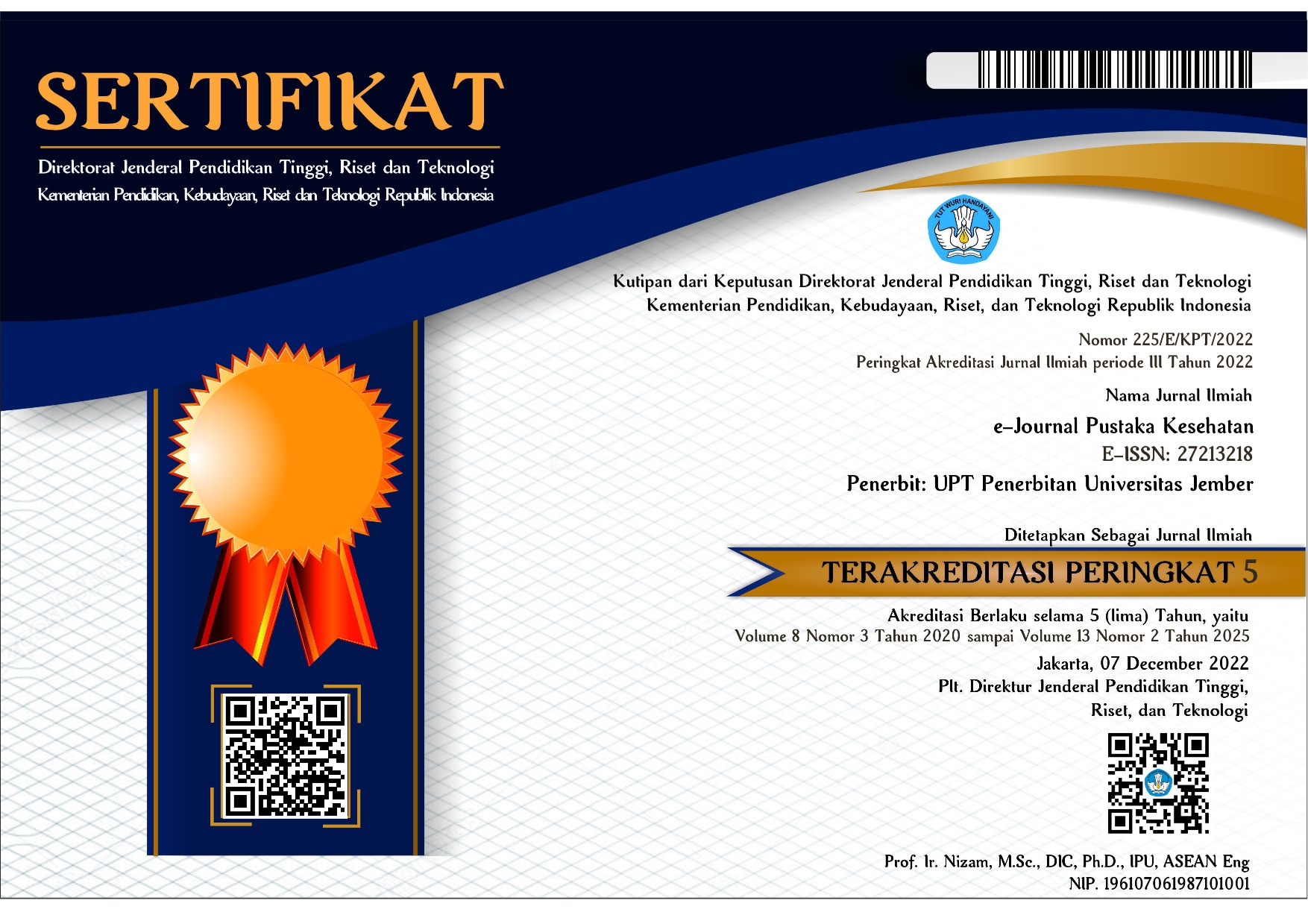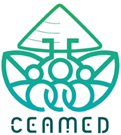Uji Aktivitas Antibakteri Ekstrak Metanol dan Fraksi Daun Kenikir (Cosmos caudatus Kunth) terhadap Salmonella typhi
DOI:
https://doi.org/10.19184/pk.v8i3.13008Keywords:
Kenikir leaves, antibacterial activity, S. typhiAbstract
The leaves of kenikir are known to have many benefits, one of which can be used as medicine. Kenikir leaves are reported to have antibacterial activity against the bacteria Salmonella typhi (S.typhi). S. typhi is a bacterium that causes typhoid fever. Typhoid fever is still an endemic disease in Asian countries, especially Indonesia. Typhoid fever became the third largest disease in Indonesia in 2010. The study related to the antibacterial activity of kenikir leaf fraction to S. typhi has never been reported. Therefore, it is necessary to conduct research related to the antibacterial activity of extracts and leaf fractions of kenikir to compare their potential against S. typhi. The study was conducted using the disk diffusion method using 5 series of concentrations namely 5%, 10%, 15%, 20%, and 30%. Tests were carried out on methanol extract, hexane, ethyl acetate, and methanol-water fraction. The results showed that highest inhibition zone diameter is 7,75 mm which is reached by methanol extract. The order of the highest inhibiting zone diameter are extract, hexane, ethyl acetate, and methanol-water fraction.
Downloads
References
[2]. Oka IM, Parwata Adi, Kimia J, Kimia L, Fmipa O, Udayana U. Obat Tradisional Oleh I Made Oka Adi Parwata Jurusan Kimia Laboratorium Kimia Organik Fmipa. Bacillus cereus secara In Vitro The Effect of Kenikir Leaves ( Cosmos caudatus ) Extract on In Vitro Growth of Bacillus Universitas Udayana 2016. 2016;1–71.
[3]. Saifudin A, Usia T, AbLallo S, Morita H, Tanaka K, Tezuka Y. Potent water extracts of Indonesian medicinal plants against PTP1B. Asian Pac J Trop Biomed [Internet]. 1 Januari 2016 [dikutip 8 Februari 2019];6(1):38–43. Tersedia
pada: https://www.sciencedirect.com/science/article/pii/S2221169115002440.
[4]. Hidayat S, Wahyuni S, Andalusia S. Seri Tumbuhan Obat Berpotensi Hias. Jakarta: Elex Media Komputindo; 2006.
[5]. Hidayat S, Napitupulu RM. Kitab Tumbuhan Obat. Jakarta Timur: Agriflo. (Penebar Swadaya Group); 2015. [6]. Mursito B. Tanaman Hias Berkhasiat Obat. Jakarta: Niaga Swadaya; 2011.
[7]. Shui G, Leong LP, Shih PW. Rapid screening and characterisation of antioxidants of Cosmos caudatus using liquid chromatography coupled with mass spectrometry. J Chromatogr B Anal Technol Biomed Life Sci. 2005;827(1):127–38.
[8]. Moore S, Safita G, Rismawati E, Sakti E, Syafnir L. Uji Aktivitas Antibakteri Daun Kenikir (Cosmos caudatus Kunth.) dan Daun Sintrong (Crassocephalum crepidioides (Benth.) S. Moore.) terhadap Bakteri Staphylococcus aureus dan Pseudomonas aeruginosa. 2015;421–8.
[9]. Rasdi NH, Samah OA, Sule A, Ahmed QU. Antimicrobial studies of Cosmos caudatus Kunth. (Compositae). 2010;4(April):669–73.
[10]. Lutpiatina L, Amaliah NR, Dwiyanti RD. DAYA HAMBAT EKSTRAK DAUN KENIKIR ( Cosmos caudatus Kunth .) TERHADAP Staphylococcus aureus. 2017;5(2):83–91.
[11]. Febianti Z. Uji In Vitro Efek Antimikroba Ekstrak Daun Kenikir ( Cosmos caudatus H B . K ) terhadap Methicillin-Resistant Staphylococcus aureus (MRSA) Antimicrobial In Vitro Study of Cosmos caudatus H . B . K Leaves Extract Towards Methicillin-Resistant Staphyloc. J Agromedicine Med Sci. 2015;1(2):1–6.
[12]. Dwiyanti W, Ibrahim M, Trimulyono G. Pengaruh Ekstrak Daun Kenikir ( Cosmos caudatus ) terhadap Pertumbuhan Bakteri Bacillus cereus secara In Vitro The Effect of Kenikir Leaves ( Cosmos caudatus ) Extract on In Vitro Growth of Bacillus cereu s. 2012;
[13]. Sari E ratna; LNSD. Uji Aktivitas Antibakteri dari Ekstrak Etanol dan Beberapa Fraksi Daun Kenikir ( Cosmos caudatus Kunth.) terhadap Bakteri Penyebab Disentri Shigella sp. 2018;20:14–9.
[14]. Putri DN. Uji Aktivitas Antibakteri Ekstrak Metanol Daun Kenikir ( Cosmos caudatus Kunth .) terhadap Bakteri Salmonella typhi . 2003;
[15]. Ochiai RL, Acosta CJ, Danovaro-Holliday MC, Baiqing D, Bhattacharya SK, Agtini MD, et al. A study of typhoid fever in five Asian countries: Disease burden and implications for controls. Bull World Health Organ. 2008;86(4):260–8.
[16]. Departemen Kesehatan RI. Laporan Nasional Riset Kesehatan Dasar (Riskesdas) 2007. Jakarta; 2008.
[17]. Kemenkes. Pusat Data dan Informasi Profil Kesehatan Indonesia. Jakarta; 2010.
[18]. Njateng GSS, Du Z, Gatsing D, Mouokeu RS, Liu Y, Zang HX, et al. Antibacterial and antioxidant properties of crude extract, fractions and compounds from the stem bark of Polyscias fulva Hiern (Araliaceae). BMC Complement Altern Med. 2017;17(1):1–8.
[19]. Houghton PJ, Raman A. Analysis of crude extracts, fractions and isolated compounds. Lab Handb Fractionation Nat Extr. 2011;113–38.
[20]. Bunawan SN, Bunawan H, Baharum N, Amin NM, Noor NM. Cosmos Caudatus Kunth: A Traditional Medicinal Herb. Glob J Pharmacol. 2014;8(3):420–6.
[21]. Ramadhan F, Mukarramah L, Risma FA, Yulian R, Annisyah NH, Asyiah IN. Flavonoids From Endophytic Bacteria of Cosmos Caudatus Kunth. Leaf As Anticancer and Antimicrobial. Asian J
Pharm Clin Res. 2018;11(1):200.
[22]. Helander IM, Nurmiaho-Lassila EL, Ahvenainen R, Rhoades J, Roller S. Chitosan disrupts the barrier properties of the outer membrane of Gram-negative bacteria. Int J Food Microbiol. 2001;71(2– 3):235–44.
Downloads
Published
Issue
Section
License
e-Journal Pustaka Kesehatan has CC-BY-SA or an equivalent license as the optimal license for the publication, distribution, use, and reuse of scholarly work. Authors who publish with this journal retain copyright and grant the journal right of first publication with the work simultaneously licensed under a Creative Commons Attribution-ShareAlike 4.0 International License that allows others to share the work with an acknowledgment of the work's authorship and initial publication in this journal.







